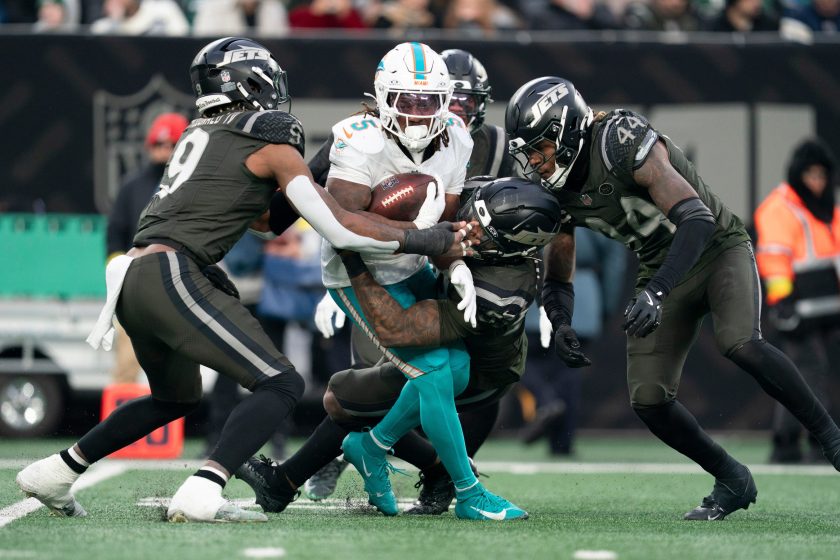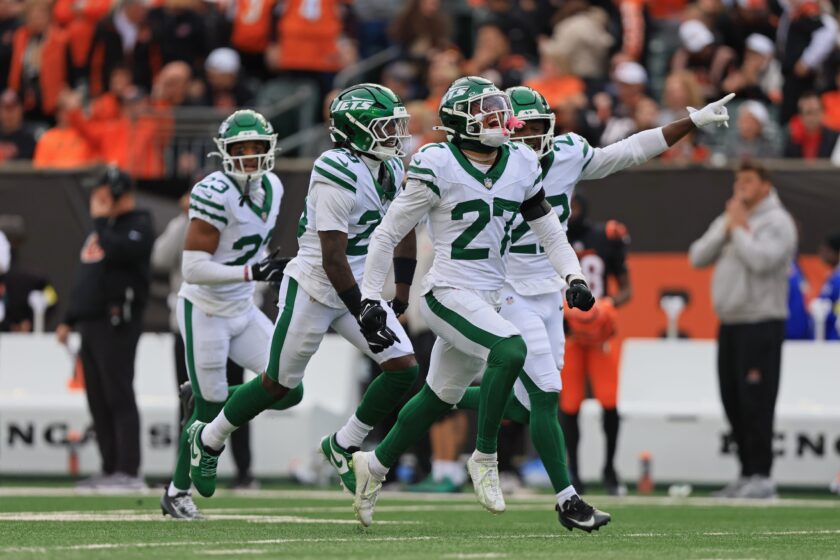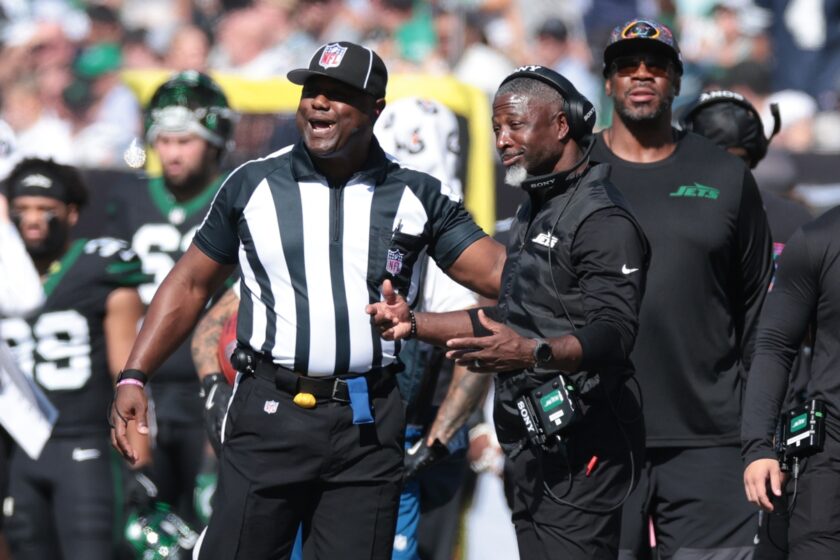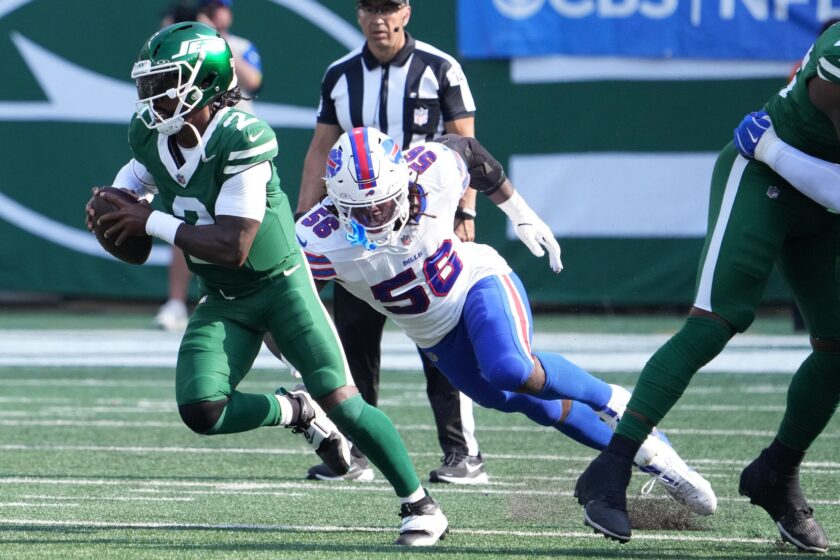New York Jets 7-round 2020 mock draft: Final edition
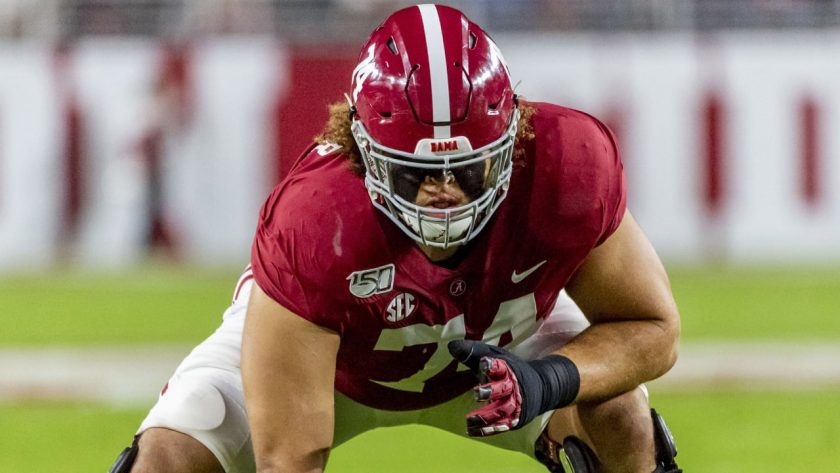
With the 2020 NFL Draft approaching, the New York Jets’ options at 11 are becoming clearer, creating a more concrete draft strategy.
[sc name=”kyle-newman-banner” ]The 2020 NFL Draft is just days away. That means this is peak rumor season in the NFL. For the New York Jets, that means contradicting reports on what they plan to do at No. 11.
There have been a number of reports that say the Jets will go offensive line no matter which of the top four falls to them. Others say the Jets love CeeDee Lamb and might take him at 11 if they don’t get the offensive lineman they want. Yet another says the Jets have been eyeing Henry Ruggs III for over a year.
What are the Jets going to do when their pick comes up at 11? That’ll depend on how the board falls, but odds are Joe Douglas wants to finish building the offensive line.
Round 1, 11th overall: Jedrick Wills Jr., OT, Alabama
A poor Wonderlic score and changing dynamics could force Wills outside the top 10. The former Alabama right tackle is an elite prospect.
His pass-block technique is the best in the class, and his run-blocking technique is elite. He’s mean, strong, and has a high football IQ. Wills has all the tools to be an elite tackle in the NFL on either the right or left side.
Wills doesn’t need much work, he’s a mostly polished prospect. He should be a plug-and-play tackle for any team that selects him.
If he’s on the board for the New York Jets at 11, expect Joe Douglas to run up the draft card as fast as he can.
Round 2, 48th overall: Jalen Reagor, WR, TCU
Reagor was a borderline first-round pick before the combine in February. An awful 40-time has sent Reagor tumbling down to the middle of the second round.
Reagor is an explosive athlete and plays physical. He’s a big-play threat, but he’s more than just that. He’s a solid route runner with good hands. He has No. 1 receiver potential if he can put everything together, but he’ll likely be a No. 2 option.
The Jets desperately need to bolster their receiving corps. Reagor would likely be the team’s top receiver from day one. That’s a lot of pressure for a rookie receiver, but if the Jets are going to put that on a second-round pick, Reagor would be the best option.
Round 3, 68th overall: Bryce Hall, CB, Virginia
After going offense in the first two rounds, the Jets attack the defense in the third round. Bryce Hall offers a perfect fit for Gregg Williams‘ defense.
Hall is an elite zone cover prospect. He’s physical and athletic, just overall a perfect fit for the Jets’ defense.
Hall could be the steal of the draft. He was set to be a first-round pick when the college season began, but a serious ankle injury robbed him of that.
He’s been physically cleared to compete now and the talent is evident. If the Jets go corner in the draft, expect it to be the Virginia product.
Round 3, 79th overall: Jonathan Greenard, EDGE, Florida
Greenard is an awkward fit for NFL teams. His size and skillset don’t match each other. He would be best as a down lineman, but his 263-pound frame says otherwise.
He’ll likely be a strong side edge rusher in the NFL due to his strong run defense. He has a knack for setting the edge and he uses his long arms as a weapon to keep runners in check.
He’s a technical pass rusher who lacks athleticism. His counter moves are strong and he knows how to play within himself.
Greenard compares best to a player like Jordan Jenkins. It would stand to reason that the Jets would draft Greenard and let him learn on the bench for a year before replacing Jenkins.
Round 4, 120th overall: Antonio Gandy-Golden, WR, Liberty
After drafting an athletic big-play threat in round two, the Jets add a physical red-zone threat. Gandy-Golden’s physical presence is something the Jets have lacked for years.
They haven’t had a receiver with his physicality since Brandon Marshall. Giving third-year quarterback Sam Darnold a big-bodied receiver to win 50-50 balls in the red zone should be a priority for Joe Douglas in this draft.
Gandy-Golden isn’t perfect. He struggles with drops, his route running is raw, and his football IQ isn’t the highest. He’s a project player, but he has the physical tools to have a role in his rookie year.
Round 5, 158th overall: Anthony McFarland Jr., RB, Maryland
Speed is the name of the game for Anthony McFarland Jr. The Maryland product isn’t going to run anybody over, he isn’t shifty, and he isn’t a strong receiver. The only thing he provides is electric speed on the ground.
The Jets need a complement to Le’Veon Bell, one who brings patience and power. He’s rarely going to run for a loss, but he lacks big-play ability. McFarland can solve that issue.
There are worse ways to spend a fifth-round pick than on a one-dimensional backup running back.
Round 6, 191st overall: Braden Mann, P, Texas A&M
The New York Jets are in desperate need of a replacement for Lac Edwards. They only have one on their roster and he lost a training camp battle in 2019.
If they’re going to draft a punter, it’s going to be Braden Mann who left Texas A&M as one of the best college punters ever. He set the average punt record in 2019 and his numbers for the Aggies would have routinely been at the top of the NFL.
He has all the tools to be an elite punter. The one flaw in his game is that he often out-punts his coverage unit, which shouldn’t be an issue with more athletic gunners in the NFL.
Four years of a potentially elite punter for next to nothing is valuable. It would make sense that the Jets didn’t look to add a punter in free agency if they were targeting a prospect in the draft.
A contributor here at elitesportsny.com. I'm a former graduate student at Loyola University Chicago here I earned my MA in History. I'm an avid Mets, Jets, Knicks, and Rangers fan. I am also a prodigious prospect nerd and do in-depth statistical analysis.

